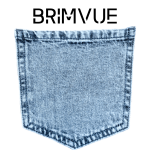As a new parent, one of the first things you’ll need to prepare for your baby is a car seat. Choosing the safest car seat for your newborn is crucial, not only because it’s a legal requirement but because it could save your baby’s life in the event of an accident. With so many options available, it can feel overwhelming to pick the right one. But don’t worry! We’re here to help guide you through this important decision, making sure your baby is secure and comfortable on every trip.
When selecting a car seat, it’s essential to understand the different types available and their features. Infant car seats, convertible seats, and all-in-one models each serve specific needs and come with varying safety features. As a parent, you’ll want to consider factors such as your baby’s weight, age, and how long you plan to use the seat. Additionally, you’ll need to ensure that the seat fits properly in your car and is easy to install.
In this guide, we’ll break down the key features to look for when choosing a car seat, such as the harness system, side-impact protection, and ease of installation. We’ll also touch on the importance of car seat recalls and how to keep track of safety updates. By the end of this guide, you’ll be well-equipped to make an informed decision and feel confident that your baby is riding in the safest car seat possible.
Understanding the Different Types of Car Seats
Rear-Facing Car Seats: The Safest Option for Newborns
The American Academy of Pediatrics (AAP) strongly recommends that babies stay in a rear-facing car seat until at least age 2 or until they reach the highest weight or height allowed by the car seat manufacturer. This position is the safest for newborns because it provides maximum support for your baby’s head, neck, and spine.
Infant Car Seats vs. Convertible Car Seats: What’s the Difference?
Infant car seats are specifically designed for newborns and are rear-facing only. They are portable, which makes them convenient for transferring your baby from the car to your home or stroller. On the other hand, convertible car seats can be used both rear-facing for newborns and forward-facing as your child grows. While convertible seats offer long-term use, they might not be as portable as infant seats.
Another key difference is the size and fit of the car seat. Infant car seats are usually more compact and designed to hold babies up to 30-35 pounds, making them ideal for smaller newborns. They typically have a carrier handle, allowing parents to easily transport their sleeping baby without disrupting their rest. Convertible car seats, on the other hand, are bulkier and may be better suited for older babies or toddlers. These seats tend to grow with your child, offering extended use from infancy through their early childhood years.
While infant car seats provide a snug fit for newborns, convertible seats are designed with more flexibility in mind, allowing you to keep your child in the rear-facing position for as long as possible. Both types of seats come with essential safety features, including five-point harnesses and side-impact protection, but it’s important to evaluate your lifestyle and needs before making a choice. If you plan to move your baby between vehicles often, an infant seat might be more practical, while a convertible seat is an excellent option if you prefer an all-in-one solution.
Key Safety Features to Look For
5-Point Harness: Ensuring Maximum Security
A 5-point harness system is non-negotiable when choosing a car seat. This type of harness secures your baby’s shoulders, hips, and between the legs, providing comprehensive protection during a crash. Look for seats with easy-to-adjust straps, so you can get the perfect fit as your baby grows.
Side-Impact Protection: How It Protects Your Baby
While head-on collisions are most common, side-impact crashes are particularly dangerous for infants. Side-impact protection is designed to absorb crash forces and reduce the risk of injury. Many high-end car seats include extra cushioning around the head and torso to provide additional protection in case of a side-impact crash.
Stability Base: What You Need to Know
The stability base of a car seat keeps it firmly secured in your vehicle, minimizing movement during a crash. Some seats come with a load leg—a metal leg that extends to the floor of the car, further improving stability. Look for car seats that include this feature, as it can significantly reduce the risk of injury.
Crash Test Ratings and Certifications
Why Crash Test Ratings Matter
Before purchasing any car seat, it’s essential to check the crash test ratings. These ratings, provided by organizations like the National Highway Traffic Safety Administration (NHTSA), indicate how well a car seat performs in crash simulations. A higher rating means the car seat offers better protection in the event of an accident.
Understanding the Certification Labels
All car seats sold in the U.S. must meet federal safety standards, which are marked by a certification label. Look for the label on the car seat itself, confirming it meets these safety requirements.
How to Choose a Car Seat That Fits Your Car
Importance of Proper Installation
Even the safest car seat won’t protect your baby if it’s not installed correctly. That’s why it’s essential to check for proper installation. Your car seat should be installed tightly and should not move more than an inch from side to side. If you’re unsure, don’t hesitate to get help from a certified car seat technician.
Compatibility with Your Vehicle’s Seat Belts and LATCH System
Make sure your car seat is compatible with both your vehicle’s seat belts and the LATCH system (Lower Anchors and Tethers for Children). The LATCH system simplifies installation, but not all vehicles are compatible with it. Always check your car’s manual to see if it supports LATCH.
Comfort Features for Your Newborn
Seat Padding and Reclining Positions
For newborns, comfort is crucial since they spend a lot of time in their car seats. Look for a car seat with adequate padding and multiple reclining positions to help your baby rest comfortably during rides. A more reclined position also reduces the risk of head slumping, which can affect your baby’s airway.
Breathable Fabrics: Keeping Your Baby Cool and Comfortable
Babies tend to overheat quickly, especially in car seats. Breathable fabrics are essential for keeping your newborn cool and preventing them from getting too sweaty. Look for car seats made from fabrics that allow air circulation, such as cotton blends or moisture-wicking materials.
Ease of Installation and Use
Installation Methods: LATCH vs. Seat Belt
Choosing a car seat that’s easy to install will save you time and frustration. Many car seats offer both the LATCH system and seat belt installation options, so you can choose whichever method works best for your car.
Can You Install It Yourself? Tips and Tricks
Installing a car seat can be tricky, but it’s doable with the right instructions. If you’re struggling, many local hospitals and fire stations offer car seat installation clinics, where certified technicians can help ensure your seat is properly installed.
When to Transition Your Baby to a New Car Seat
Signs It’s Time to Upgrade
Your newborn will outgrow their infant car seat at some point. Signs it’s time to upgrade include when your baby’s head is just 1 inch or less from the top of the seat or if they’ve reached the maximum weight limit for the seat.
How Long Can Your Baby Stay in an Infant Car Seat?
Most infant car seats are designed for babies up to 30 pounds, but it’s essential to follow the manufacturer’s guidelines. Once your baby has exceeded the weight or height limits, it’s time to transition to a convertible seat.
Budgeting for a Safe Car Seat
High-End vs. Budget-Friendly Options
While some car seats can be quite expensive, you don’t necessarily need to break the bank to find a safe option. Many affordable models offer excellent safety features. Just make sure to check the crash test ratings and look for essential safety features like the 5-point harness and side-impact protection.
How Much Should You Spend on a Car Seat?
A car seat is a long-term investment in your baby’s safety. While you don’t need to buy the most expensive option, it’s important to spend enough to get a seat that’s both safe and comfortable for your baby.
Car Seat Accessories: What You Need vs. What You Don’t
Useful Add-ons to Enhance Safety and Comfort
Some accessories can improve your baby’s car seat experience. A sunshade or seat protector can help keep your car seat clean and your baby shaded from the sun. Just make sure any accessories you buy are compatible with your car seat.
Avoiding the Unnecessary: What to Skip
Don’t be tempted by unnecessary accessories like car seat covers or excessive padding, which can interfere with the seat’s safety features. Always follow the manufacturer’s recommendations for accessories.
Common Mistakes to Avoid When Buying a Car Seat
Buying Used Car Seats: Why It’s Risky
You might be tempted to buy a second-hand car seat to save money, but used car seats can be dangerous. They may have been in a crash, or they may not meet current safety standards.
Ignoring Expiry Dates and Recall Notices
Car seats have expiry dates, usually after 6-10 years. Be sure to check the label for the expiration date, and never use a seat that’s been recalled. Safety standards change over time, so make sure your car seat is up to date.
Choosing a Car Seat Based on Your Lifestyle
Traveling Frequently? Look for a Portable Option
If you travel often, look for a portable infant car seat that’s easy to carry and fits well in taxis and rental cars. Some seats even come with an easy-to-use stroller system for added convenience.
Living in an Urban Area? What You Need to Know
In urban environments, you might not always be using a car. Consider a lightweight and compact seat that’s easy to carry and store.
How to Install Your Car Seat Correctly
Step-by-Step Guide to Proper Installation
Make sure your car seat is installed securely by following the manufacturer’s installation instructions carefully. Use a car seat belt or LATCH system, and ensure the seat does not move more than an inch side to side.
Getting Help: Car Seat Installation Clinics
If you’re unsure, don’t hesitate to visit a car seat installation clinic where experts can help guide you through the process.
Maintaining Your Car Seat
Regular Checks for Wear and Tear
Over time, your car seat may show signs of wear. Check regularly for any cracks, frayed straps, or damaged parts.
Cleaning Your Car Seat Safely
Keeping your car seat clean is important, but always follow the manufacturer’s guidelines when washing it. Never use bleach or harsh chemicals.
Choosing the safest car seat for your newborn is an important task that requires careful consideration. By understanding the different types of seats, looking for key safety features, and following installation guidelines, you can ensure your baby’s safety during every ride.

Calvin Bassey is a dedicated writer and parenting enthusiast passionate about guiding expectant parents through the journey of pregnancy. With a deep understanding of maternal health and baby care, he provides practical and insightful advice to help families prepare for childbirth and early parenthood. His work at Brimvue focuses on empowering parents with knowledge, ensuring they navigate this transformative experience with confidence and ease.

